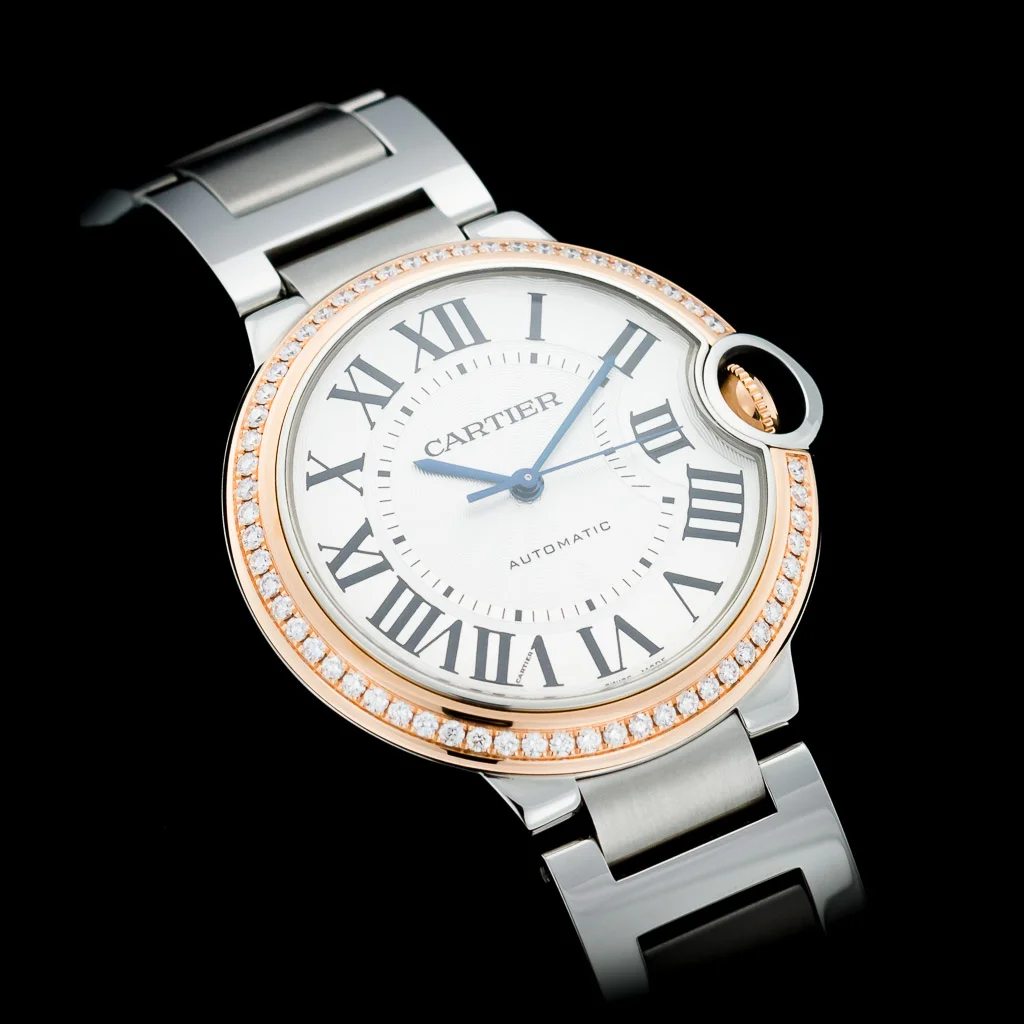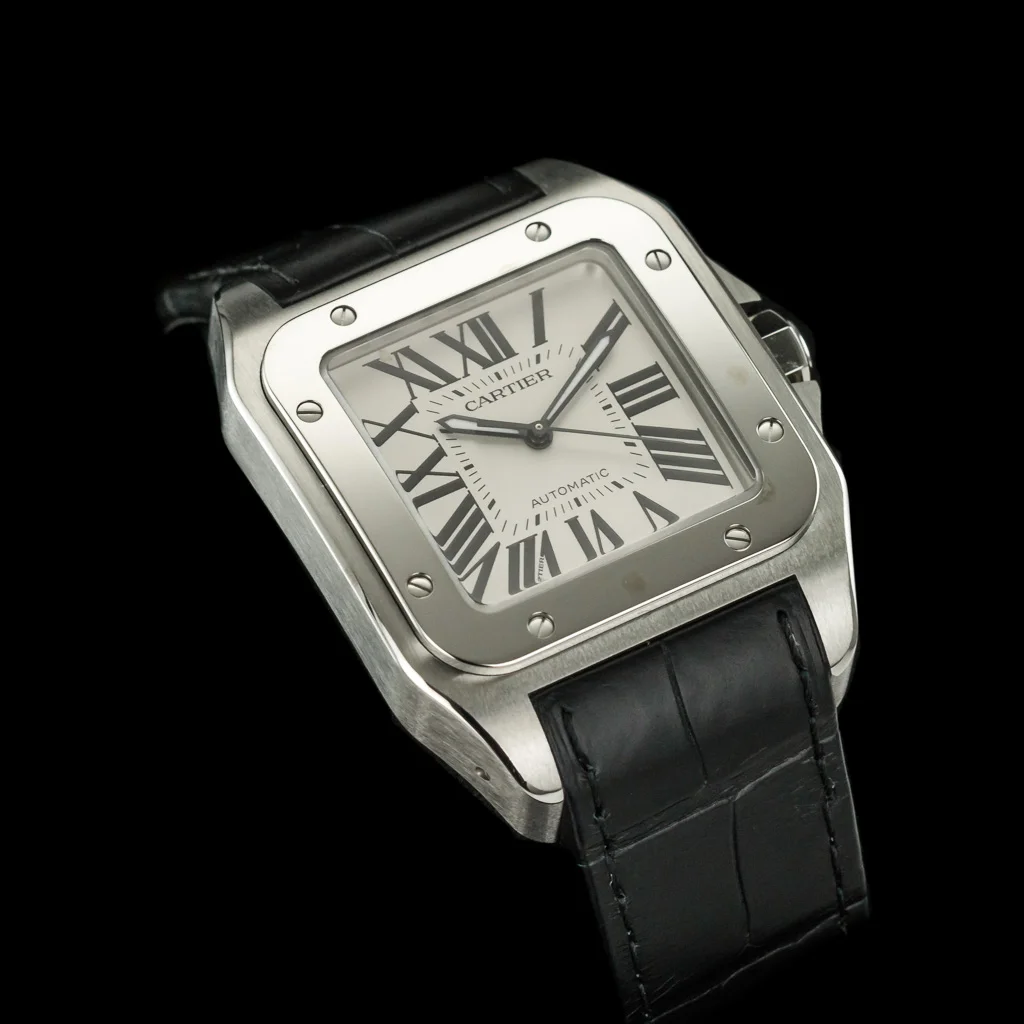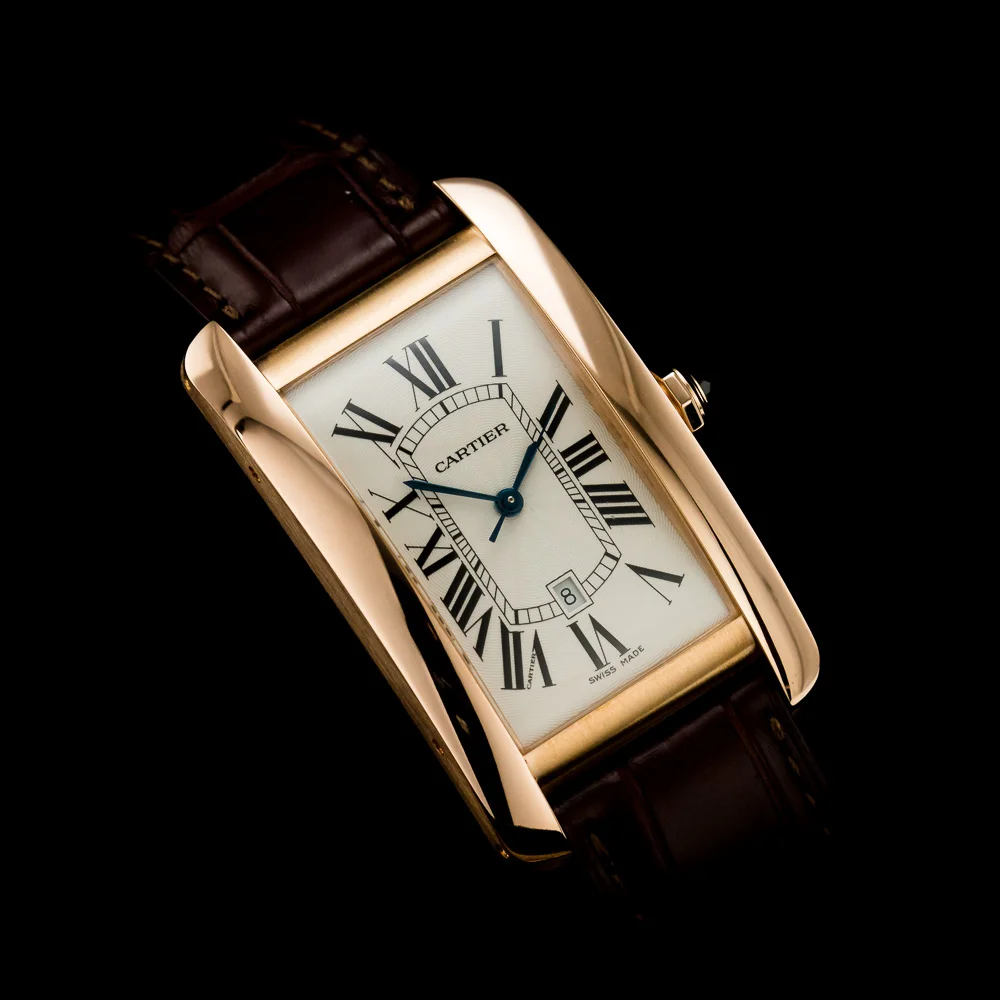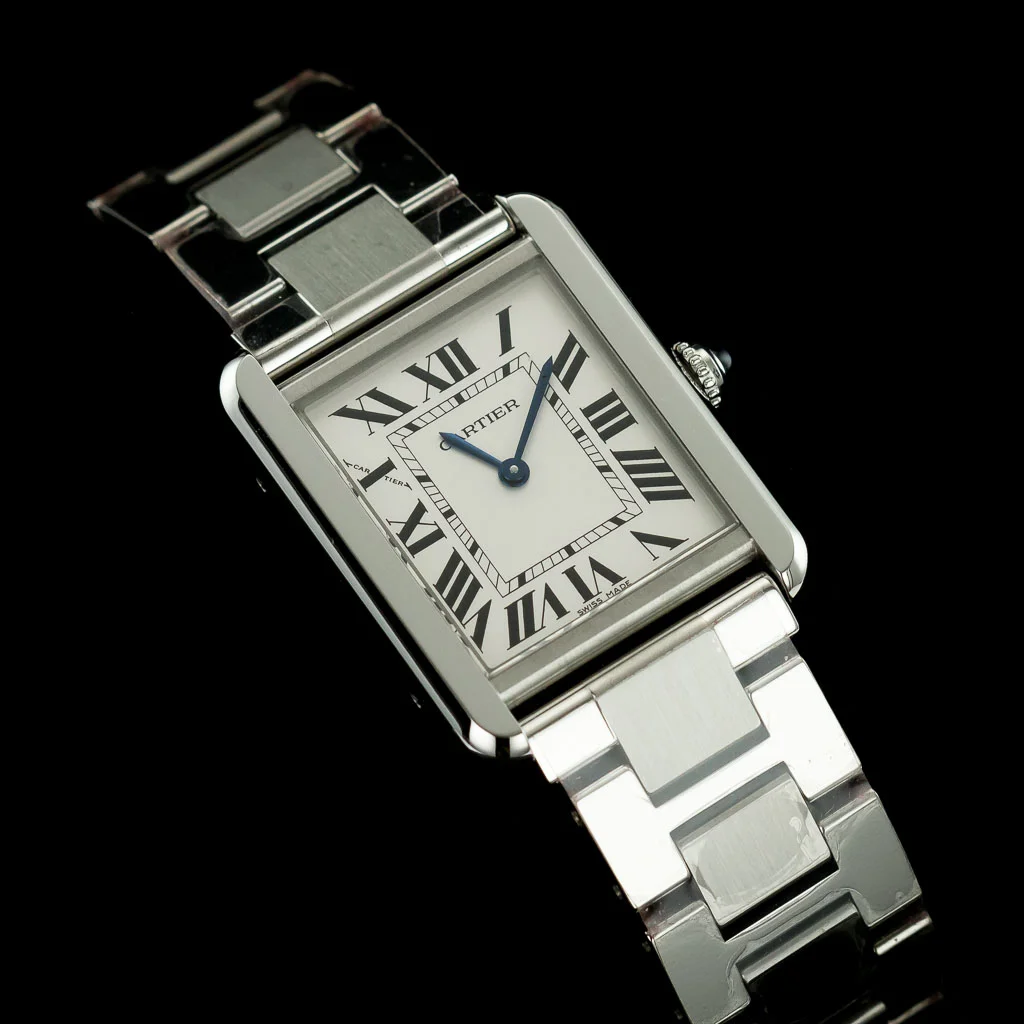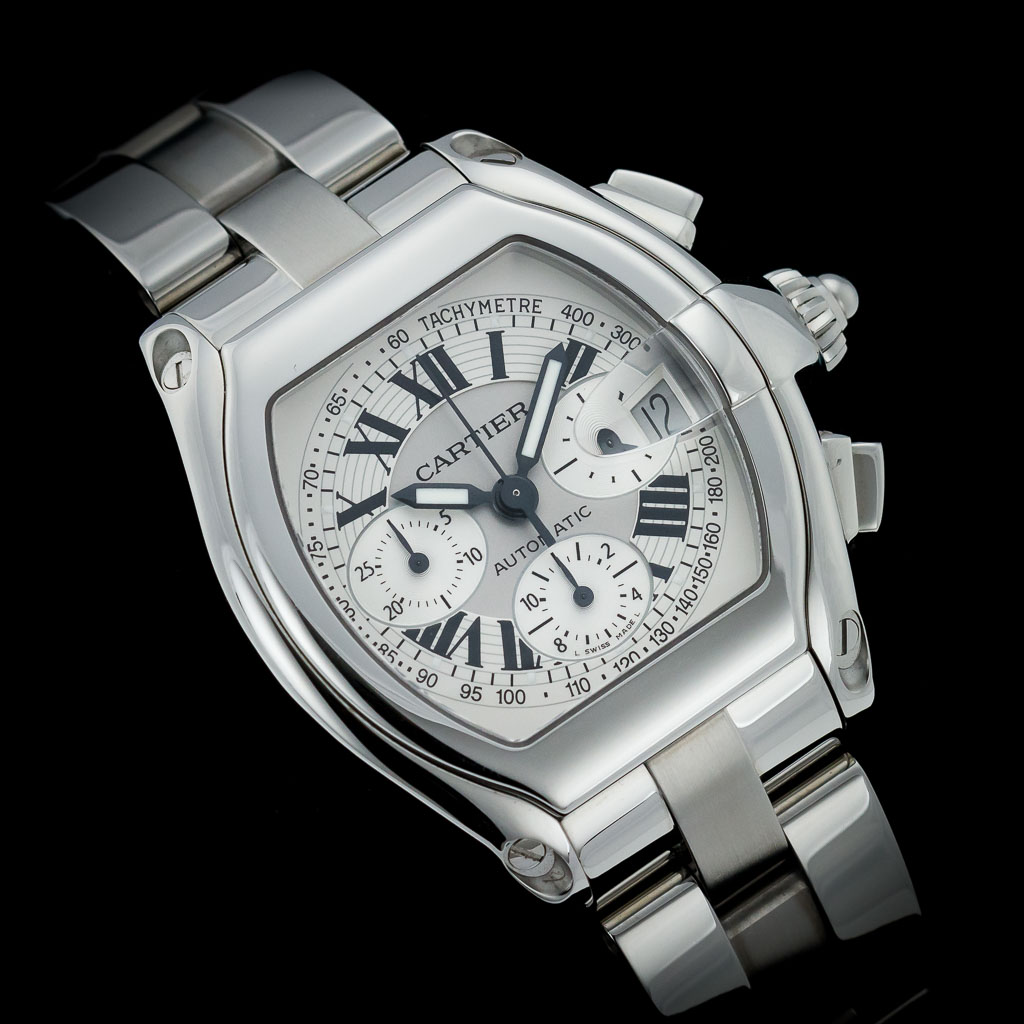The House of Cartier was founded in 1847 by Louis-Francois Cartier when he took over a Paris-based workshop from his master, Adolf Picard at the age of 29. Cartier’s intention was to continue the tradition of fine watch and jewellery making.
It was Louis’ grandsons, Pierre, Louis and Jacques who ultimately brought the brand to worldwide prominence, opening boutiques in Paris, London and New York.
Cartier’s brand has always been synonymous with luxurious and exquisite jewellery. It also made pocket watches and necklaces incorporating watch movements. However, the most significant moment in the company’s history, in terms of watchmaking, was in 1904, when Louis Cartier designed the first wristwatch, which he named ‘Santos’ for his friend and famous aviator Alberto Santos-Dumont. The timepiece that fastened to the wrist with a leather band enabled the aviator to check the time whilst flying. His celebrity status changed the way men viewed timepieces and it made men’s watches fashionable for the first time.
Even though Patek Philippe is credited with creating the first wristwatch in 1868, Cartier’s influence was fundamental in making the wristwatch more popular than the pocket watch. King Edward VII regarded Cartier as ‘the jeweller of kings and the king of jewellers’.
Modern day royals continue the tradition of wearing Cartier with the Duchess of Cambridge especially being a loyal fan.
Cartier has enjoyed a long-term relationship with England and is linked to quintessentially British institutions such as the Cartier Queen’s Cup, a prestigious polo event held at Guards Polo Club.
BALLON BLEU
Cartier’s Ballon Bleu was released in 2006. The name stems from its two most significant features, its blue sapphire ‘cabochon’ which is mounted in the crown and the ‘balloon’ shape of its case.
SANTOS
The Cartier Santos was designed in 1904 by Louis Cartier specifically for his friend, the aviator Alberto Santos-Dumont who requested a timepiece that could tell the time whilst he was flying. The popularity of the aviator wearing the wristwatch made men’s watches fashionable for the first time.
TANK AMERICAINE
The Cartier Tank Americaine was introduced in 1989. Based on the original Cartier Tank, the watchmakers at Cartier decided to remodel the style by curving the watch case to fit the wrist more comfortably.
TANK SOLO
Drawing inspiration from the original 1917 Cartier Tank, the Tank Solo, introduced in 2004, is a modern interpretation of the classic design yet still staying loyal to it’s Cartier features of Roman numerals and sapphire cabochon.
CALIBRE DE CARTIER
Another recent model, introduced in 2010 is the Calibre de Cartier. It features an elegant yet sporty rounded shaped case. Originally the watch was launched with a 42mm case diameter, but later the model range grew to include a smaller 38mm option. In 2013, Cartier released the Calibre de Cartier Chronograph.
ROADSTER
Taking its inspiration from the automotive industry of the 1940’s and 1950’s, the Roadster was unveiled in 2001. The design of the Roadster is based on the silhouette of the cars of that period. The magnified date display is reminiscent of the air intake opening on the hood and the screws placed in the corners of the housing, pay homage to the headlights of the vehicle.
LA DONA
La Dona was created as a tribute to Mexican actress and singer Maria Felix in 2006. It has a very distinctive trapezium-shaped case, together with it’s distinctive reptilian-like links to acknowledge the actress’ passion for crocodiles.


